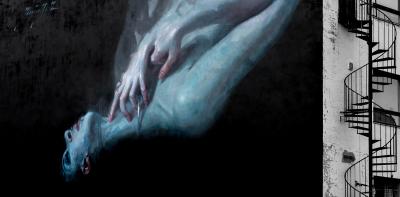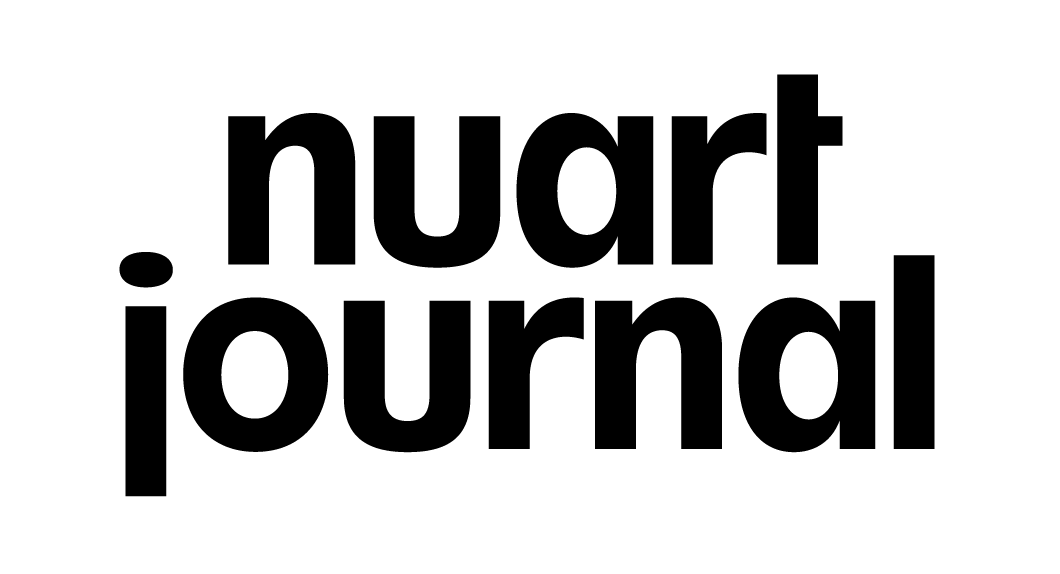Post Street-Art: When a Street Needs a Name
Here’s our chance to reset and reimagine the contemporary moment.
Evan Pricco is the Editor-In-Chief of leading international contemporary art magazine, Juxtapoz, based in San Francisco, California. Prior to starting with Juxtapoz in 2006, Evan worked at SF-based gallery and apparel company, Upper Playground. He is the author of Juxtapoz’ continuing book series, including a brand new title, Juxtapoz Hyperrealism, out in stores in Fall 2014. He has contributed text to numerous books, as well as written for Playboy. He continues to champion Public Art everywhere he goes, and has been interviewed by Bloomberg News about the merits of Public Art and its financial impact. He now lives in Sausalito, California.
I’m not always someone who demands labels, and often find myself defending or even fighting against full-on definitions and brandings of artistic practices. That might be because I live amongst and in the midst of the Millennial generation, where, in essence, you can be what you want to be, where characteristics and definitions of self are fluid and evolving, that you are never this one thing. So I’m open to change. I want to be cool with the kids. And just as scientists recently declared that the Holocene era’s 12,000 year reign should now cede to the Anthropocene age dominated by human’s geological impact, we can finally, as curators, critics and artists, take on the task of examining Street Art, the dominating populous art form of the past 25 years, and give it a new name. For the first time in my literary life, I’m thanking science for the inspiration.

Mural by Henrik Uldalen.
When we talk about Street Art’s explosion over the past two decades, my interpretation is that we think of Street Art in the often-illegal, non-gallery form, rooted and influenced by the major precursors of revolutionary art movements of the century before it; the Dada, Futurist, Situationist, Punk, Hip-Hop and in a more direct way, Graffiti. At its core, Street Art as we celebrate it here at Nuart, changed the way we experience art in daily life, but also how we consume art. When done effectively, it creates nuanced discussion about the use of public space and curation of art, while challenging the gatekeeper mentality of art history. Maybe most importantly to its future, Street Art fosters creative populism that most contemporary art doesn’t experience. It brought people who maybe never cared about painting, galleries, or even museums into an art discussion. Film, and perhaps music, have dominated the pop-culture discussion of art in the past, but Street Art has brought contemporary art to a broader audience for the first time maybe ever. This is a big deal. The act of presenting on the streets for all to see, was refreshing and inspiring, the energy and rebellion seeping into the way artists began to distribute and make art. BLU, maybe this generation’s most political muralists, began making incredible stop-motion films. Banksy turned his process into monumental press events while still maintaining the wit and piquancy of good Street Art. Swoon transformed her wheatpastes into delicate and magical installations in museums. Major exhibitions like Beautiful Losers, Art in the Streets, and The Bridges of Graffiti elevated parts of the movement with historical heft, and mural festivals around the world emerged as platforms for a new generation of kids who were unlikely to make plans to ever step foot into a gallery. Blogs emerged for discussions of the daily happenings of Street Art around the world; magazines and zines were published in every language, social media expedited public dialogue, and academics like those joining Nuart each year began to contextualize the past, present and future of what was being seeing in real time. To be honest, it all seemed that Street Art wasn’t really just “art in the streets” anymore. Maybe it never was just that. It most de nitely came to de ne a particular energy and rebellion; a new way of approaching and making art. But it evolved into something else, something bigger, wider, more visible. It has sort of outgrown itself. And that is why it’s in need of a new label. Post-Street Art. Perfect. I find it most appropriate that Martyn Reed, founder of the most venerable of Street Art festivals, a curator and organizer who has continued to nurture the movement and keep it within the historical lineage of the Dadaists, Situationists and Graffiti, has declared it time to re-think this particular genre. Nuart champions such movements of rupture and transformation, placing 100 years of Dada in the same realm of Street Art. Time to reset the dialogue.
For the 2016 edition of Nuart, the curation sees a few artists that help foster the Post-Street Art discussion, two of which I will be sitting down to discuss process with: Jeff Gillette and Henrik Uldalen. I found their inclusion, at first, to be fascinating, but quite apt. Gillette’s work speaks to not only the beauty of the utopian/dystopian experience, but of despair in the modern landscape of consumerism and consumption. In Uldalen’s work, although these solitary characters have the feeling of longing and loneliness, they become emboldened as the subject of a powerful painting. Both artists speak to empowerment in an otherwise powerless situation, of Utopias and realism, and through traditional studio practices, not only encapsulate the themes of Street Art, but provide the bridge in this conversation of what Post Street Art entails and who it informs. Art and everyday life, reality and utopia. Gillette and Uldalen help connect the dots. What seems like an unconventional curation is in fact crucial to where this movement goes next.
That’s why we are here, 100 years later, like those early Dadaists, experimenting with language, context, with what Street Art is. We gather in academic settings, festivals, on blogs, on social media, we create magazines, zines and books on the subject of street art, just like Duchamp and friends created “The Blind Man” magazine and their own methods of defining and deconstructing what it is they were doing. They were rewriting rules and making up, for lack of a better phrase, good shit along the way. And so are we. And maybe our scope is larger, the world smaller, and there are naysayers and those that think Street Art is just a fad and will fade, but it’s more than that. It’s a spirit that takes over 100 years of art dissent and reexamines how art should be part of your life. The spirit lives on, and with a need to help quantify what it is we have witnessed over the past few decades, Post-Street Art allows the movement to move forward without hesitation and questioning.
I’m hoping that Street Art becomes like Dadaism, an anti-establishment movement about deconformity that, 100 years later, turns the likes of Banksy, BLU, Swoon and others into intellectual pioneers like Duchamp, Richter and Breton. Of course, you want to believe you live in important times, that you live amongst important movements and contribute to the discussion. So perhaps selfishly, it’s inspiring to convene together and discuss the possibilities of a landmark shift in this contemporary art movement. So maybe it’s okay then, that for the first time in my life, I’m excited about labels.

